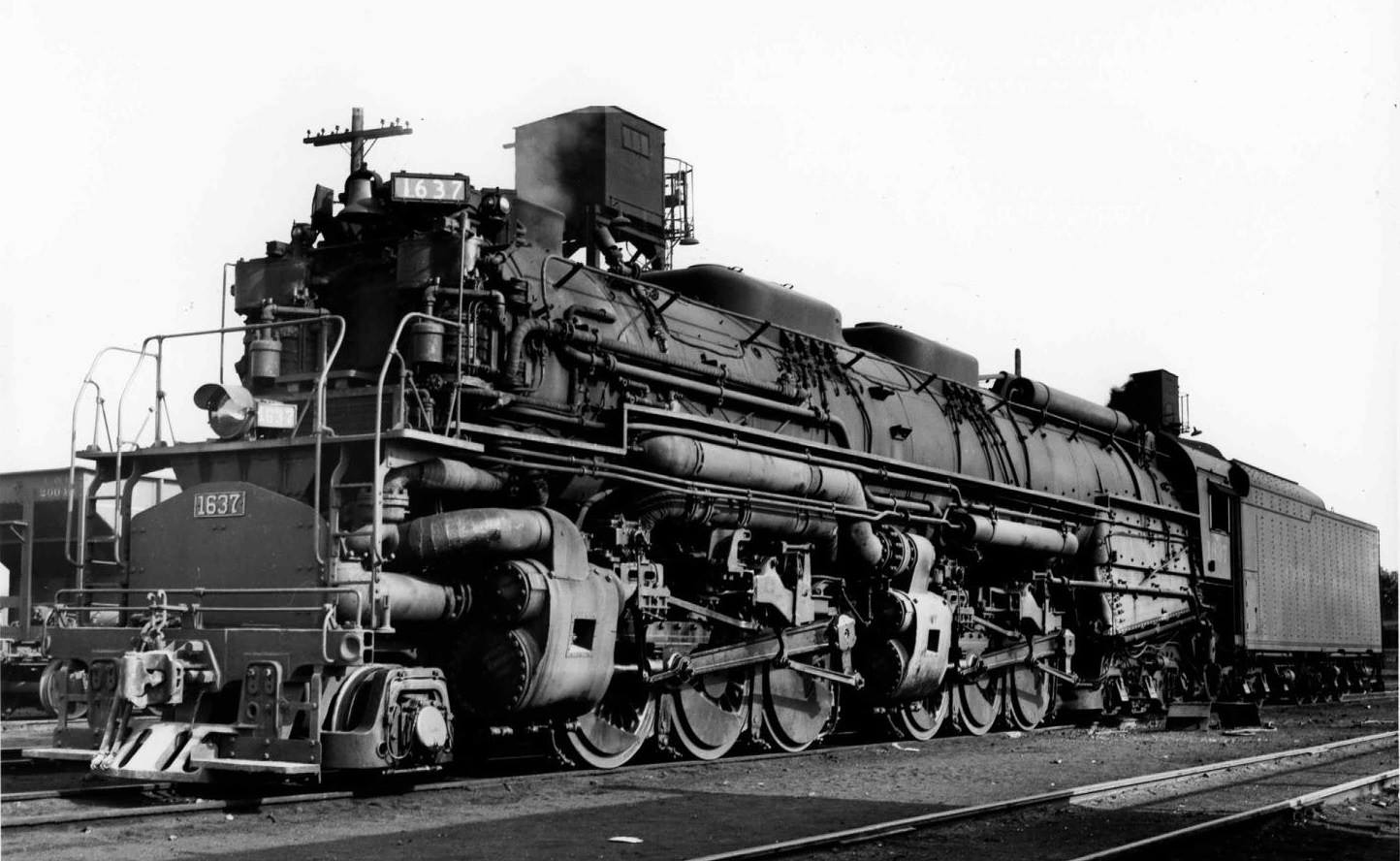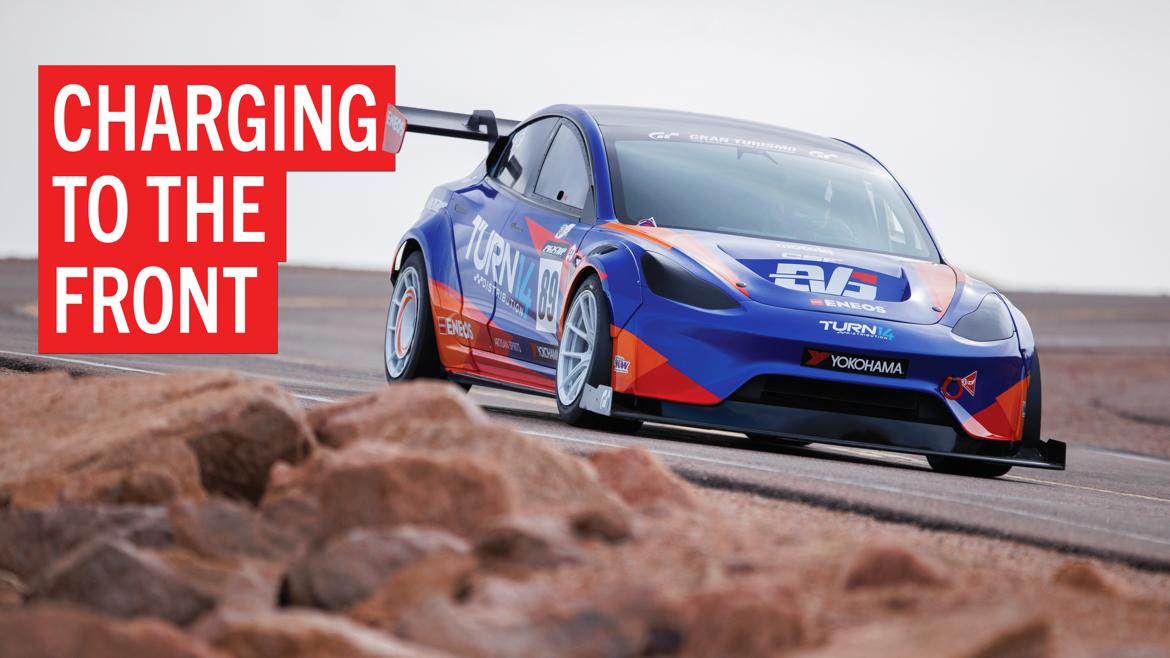The '30s and '40s also had a lot of other troubled and underperforming designs, either through the builder's fault, miscommunication between the builder and the railroad, or incorrect usage by railroads, all of which really paved the way for the diesel.
Atlantic Coast Line's R-1 Northerns were a rare example of a 4-8-4 in the deep south and the only modern steam power on the ACL. They were purchased as a passenger-only engine, with 80" drivers, to take over from doubleheaded USRA Light Pacifics. Somehow Baldwin botched the balancing on the engines though, and the ACL quickly discovered that at speeds above 70mph the driving wheels were actually bouncing off the rails, with significant damage to the rails. Baldwin and ACL spent significant time and money trying to solve the issue, and eventually did fix it, at which point the big R-1s would hit 90-100mph safely. But it pretty much left the ACL disenfranchised with steam locomotives. Baldwin tried pitching ACL an Otto Kuhler-streamlined 4-4-4-4 Duplex afterwards, but ACL instead went out and bought EMD E3s and demoted the R-1s to freight usage.


Similarly, New Haven's I-5 4-6-5 "Shoreliners", also built by Baldwin, had this same imbalance issue where the centrifugal force would exceed the axle loading and skip the drive wheels off the rails. Again, high speed cameras were used by Baldwin and New Haven to diagnose and fix the concern. Unlike ACL, New Haven was pretty happy with the I-5s afterwards, and kept them in service after New Haven began to purchase diesels. The twin-engine Alco DL-109s were found not to accelerate as fast as the I-5 and it wasn't until Alco PAs, which had the same horsepower as a DL-109 but with much less weight, arrived on the property that the I-5s were retired.

Richmond, Potomac & Fredericksburg ordered a batch of 4-8-4s (they never called them a Northern, nor did they give the class a name, they just named each engine after a Civil War general from Virginia) in 1937 for passenger usage. Somehow either an RF&P employee gave the wrong measurements or Baldwin read them wrong, but the result was that the engines would not fit the tunnels into Washington D.C. and had too high of an axle loading for the Long Bridge over the Potomac. They were forever consigned to the Virginia side of the river and in freight service as a result. Later 4-8-4s had this issue fixed fortunately.

Delaware, Lackawanna & Western ordered a batch of five 80" drivered Hudsons in 1937. They were good-looking, handsome and fast engines, but they just didn't make a lot of sense. The design brief called for hauling "12-18 cars at a sustained 80mph" but the service they were being put into was trains that were only 8-10 cars long on a line with a 70mph speed limit. Why spend this kind of money during the Great Depression for engines that weren't really needed with a driver size that couldn't be fully utilized? DL&W probably would have been better off ordering them with 70" drivers, which would have made them get up to speed faster. During this era, you see this fascination with the 80" drive wheel, which was a great bragging right but really wasn't useful unless you were running maintained 100mph speeds on flat ground.

The C&NW's E-4 Hudsons were just a bafflingly poor performer. As C&NW and Milwaukee Road engaged in an all-out war for Chicago-to-Twin Cities service, C&NW's response to the Milwaukee Road's streamlined F-7 Hudson on the Hiawatha was the Alco-built E-4 streamlined Hudson for the 400. With 84" drivers and 300psi boiler pressures, they looked like a serious speed demon and should have performed on par with the Milwaukee's engines. Before they were even delivered, C&NW decided that diesel power was a better answer, and so the E-4s were displaced off the 400. When they did arrive and were put in lesser service, testing found that the E-4s ran out of breath at 90mph and could not exceed 95mph, while Milwaukee's F-7 Hudsons, also built by Alco with 84" drivers and 300psi boilers, were hitting 120mph. An answer was never really found and the disappointing streamliners kicked around until '53, when they started being retired.

A case of improper usage, similar to the PRR Q2, was Western Maryland's Challengers. WM ordered them to speed up freight service. Then they stuck them dragging coal through the mountains and complained that they had to use helpers. Not helping the situation was that Western Maryland ordered them without roller bearings (which would make them a better, more efficient performer on the flat going) or a trailing truck booster (which would help in low-speed drag freight). Western Maryland complained that the engines never performed well in the role they were built for, but it seemed like Western Maryland didn't even know what the role they wanted them to fit into was.

C&O and Virginian also did the same thing. Lima built them the ultimate fast freight locomotive, then both railroads stuck them in drag freight service. To Lima's design's credit, it actually did fairly well in that service and C&O and Virginian loved the engines. But it was still baffling that both railroads had plenty of compound articulated 2-8-8-2s and 2-6-6-2s designed specifically for that use, and instead shoehorned their shiny new fast freight engines into the role.


























































